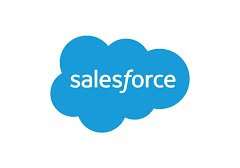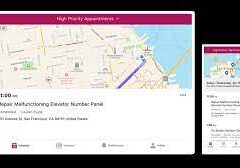Automate and scale your revenue operations with a robust portfolio of Revenue Cloud products. Use Revenue Lifecycle Management to empower your organization’s sales and revenue management processes. Salesforce Billing offers efficient resolutions to all invoice processing issues. Salesforce Revenue Summer 24 Release Notes.
- Revenue Lifecycle Management
Realize faster time to revenue with Revenue Lifecycle Management’s robust product catalog, pricing, configurator, quoting, and asset management features. Support your unique business practices by customizing Revenue Lifecycle Management’s extensible objects and APIs.- Product Catalog Management
Swiftly add multiple products based on a product classification to a product bundle and reduce time to market. Use Product Catalog Management APIs to translate select fields on the Product and Product category objects, and make the objects accessible to a global audience. Represent monetary and percentage-based product characteristics by using the currency and percent attribute data types. Define custom fields on select Product Catalog Management objects, and extend the objects to meet your business needs. Select the slider display type for product attributes of the number, percent, and currency data type, and adjust attribute values with slider controls in run time. Quickly set up Product Discovery and provide an enhanced product browsing experience to your partners and customers.- Use Dynamic Options to Add All Products Based On a Product Classification to a Product Bundle
Your product designers can now dynamically add all optional products with similar characteristics to a configurable product bundle, even as the product components in the bundle grow and evolve over time. Product designers can simply add a product classification component to the configurable product bundle. All the products that are based on the product classification are dynamically available for selection to your buyers and sellers at run time. - Maximize Product Reach with Translated Product and Product Category Data
In a global business with users from diverse linguistic backgrounds, use Product Catalog Management APIs to provide translated data for fields in Product2 and ProductCategory objects. Translated data ensures that non-English users can access and effectively use products and product categories. - Accurately Represent Monetary Values and Percentages in Product Attributes
Use the currency and percent attribute data types to describe product characteristics that represent currency and percentage values. Previously, you used only the number data type. Use the currency data type for product attributes used in financial calculations and reporting. Use the percentage data type for product attributes that represent discounts, commissions, and other percentage-based metrics. - Alter Product Attribute Values Through Slider Controls
Show attributes of the currency, number, and percent data types as sliders at run time. Instead of typing in a number, or using increment buttons, drag the slider on a predefined scale to adjust the attribute values. Sliders are intuitive and provide immediate visual feedback as your users make attribute adjustments. - Personalize Product Catalog Management Objects with Custom Fields
You can now add custom fields to multiple Product Catalog Management objects and pass the custom fields as additional fields in the Product List API and Bulk Product Details API. These APIs return values of all the custom fields to the requesting run time systems. - Other Changes in Product Catalog Management
To include or exclude picklist values from product classification attributes, product attribute definitions, or overridden product attributes, you can now use the Include or Exclude Picklist Values action next to the attributes. Previously, you used the Excluded Picklist Values field when you edited the product classification attribute, product attribute definition, or overridden product attribute. The Excluded Picklist Values field is no longer available. Additionally, to validate the component count, and to ensure that every product attribute in a static and simple bundle has a default value, and that the group cardinality is in compliance, you can now use Validate Product Definition. Previously, this functionality was called Validate Product Bundle. Finally, when a group has multiple products, click Show More to see 10 products at a time. Previously, Show More expanded to show five products. - Product Discovery
Set up product discovery faster by using the new predefined pricing and qualification procedure templates. Provide an enhanced product browsing experience to your customers and partners by using Product Discovery components on Experience Cloud sites. Customize the product browsing experience for your sales reps, customers, and partners to provide the information and options that they need. Explore the support for derived pricing, and an enhancement to easily add multiple products. - New and Changed Objects in Product Catalog Management
Do more with the new and changed objects in Product Catalog Management.
- Use Dynamic Options to Add All Products Based On a Product Classification to a Product Bundle
- Salesforce Pricing
Calculate accurate prices for all your line items by deriving a product’s price from other source products or assets or by generating contract-based prices. Set profile-level security for each element within a pricing procedure. Use the Operations Console as a one-stop shop to see all your pricing data. Dynamically map output variables in a lookup table and change context tag values for variables by using the new Assignment element. Document all costs associated with the creation of a product.- Accurately Derive Prices from Products and Assets Using Salesforce Pricing
Create derived price records to determine a product’s price by using another pricing source, such as a product or an asset. Incorporate a wide range of pricing factors and enhance pricing accuracy and accurate pricing for your derived products. - Automatically Populate Output Variables for Pricing Elements
Set default mappings for specific output columns of lookup tables associated with the List Price and Price Adjustment Matrix elements to reduce manual user entry. You can set default mapping only for the unit price, adjustment type, and adjustment value variables. - Easily Update Context Tags
Use the Assignment element in a pricing procedure to set and change the context tag values of variables. Give your users the flexibility to customise a variable’s value within a pricing procedure and enable their business to optimise their pricing strategies for maximum effectiveness. - Enhance Pricing Data Security
Set profile-level access to grant access to all pricing elements in a pricing procedure. Based on the security level you set, only the users who have access can see pricing information, and the decisions made and displayed in the Waterfall view after a pricing procedure runs. - Tailor Pricing Discounts for Your Business Using Contract-Based Pricing
Implement contract-based pricing to set discounts to specific business conditions using the predefined Contract Pricing Entries lookup table. Establish pricing rules linked to contracts, using List Price, Volume Discounts, Tier Discounts, Attribute-Based Price, Bundle-Based Price, and Price Adjustment Matrix elements. These contracted prices can override existing methods, including base price calculations and various discount types. Turn on the contract-based pricing option in a pricing element and provide a value for the Contract Pricing output variable. - Monitor Your Pricing Data From the Operations Console
Get a complete overview of the pricing data from the Operations Console. At a glance, you see the data consumed when pricing operations are performed and the event log files generated during the execution of pricing processes. - Comprehensively Track Product Cost by Using Cost Books
Create and organize multiple cost books to define expenses that occur when you create a product. Set a default cost book and create individual cost book entries to track all the cost factors associated with product creation. - New Objects in Salesforce Pricing
Do more with these new Salesforce Pricing objects.
- Accurately Derive Prices from Products and Assets Using Salesforce Pricing
- Product Configurator
Easily manage product compatibility and validation with actionable configuration rules. Build flexible bundles by searching and adding qualified products in real-time. Configure products with the currency and percentage attributes that reflect real-world values such as discounts and fees.- Increase Productivity with Actionable Configuration Rules
Easily manage product compatibility and validation with actionable configuration rules. Use these rules to automatically add or remove products, set product quantities, specify attribute values for products, and display informative messages. You can now create a rule for a product or a product bundle with up to three conditions, three actions, and eight sub-conditions. This enhanced functionality simplifies product configuration, reduces errors, and streamlines the entire process. - Create Flexible and Dynamic Sales Packages
Add products to a bundle when you configure a product. Sales reps can now search and add qualified products to a bundle in real-time, and create flexible and customized sales packages. Additionally, sales reps can add the same product multiple times with a unique name-attribute identifier. - Enhance Product Configuration with Additional Data Types
You can now configure products with the currency and percentage attributes that reflect real-world values like discounts and fees. These attributes are supported in the Product You can now configure products with the currency and percentage data types that reflect real-world values such as discounts and fees. These data types are supported in the Product Configurator Flow, Configurator UI, and Headless API, and provide a smooth data intake - Increase Service Adaptability With Custom Field and Field Mapping Support
Revenue Lifecycle Management now supports custom field mapping for operations such as quote creation, order creation, asset creation, asset update, and contract creation. Add custom fields to Revenue Lifecycle Management objects to meet your business goals. Map the custom fields between objects in the transaction lifecycle for your sales reps. Use the option to map additional fields to enhance the adaptability and utility of Revenue Lifecycle Management service. - New and Changed Objects for Product Configurator
Do more with the new and changed objects in Product Configurator.
- Increase Productivity with Actionable Configuration Rules
- Quote and Order Capture
Enhance the selling experience with Transaction Line Editor enhancements. Use custom fields to extend Revenue Lifecycle Management. Display unique prices depending on the type of transaction. Generate professional quote documents with Document Builder in Revenue Lifecycle Management. Estimate the tax on your orders. Submit orders to Dynamic Revenue Orchestrator for fulfillment or automatically submit eligible orders for fulfillment.- Transaction Line Editor
Customize the transaction experience for partner users. Manage transactions better with enhancements to the Transaction Line Editor. Know when prices in a transaction are inaccurate and easily refresh them. - Extend Revenue Lifecycle Management With Custom Field Support
Revenue Lifecycle Management now supports custom field mapping for operations such as quote creation, order creation, asset creation, asset update, and contract creation. Add custom fields to Revenue Lifecycle Management objects. Map the custom fields between objects in the transaction lifecycle for your sales reps. Map additional fields apart from the predefined set of fields, to enhance the adaptability and utility of Revenue Lifecycle Management. - Customize Prices for Different Types of Transactions
Trigger different pricing procedures based on the type of transaction by using the Sales Transaction Type object. For each type of transaction, create Sales Transaction Type records and assign pricing procedures to them. For example, create a Sales Transaction Type for B2B or B2C transactions with their own pricing procedures. Use Flow builder to default to specific types or give your sales reps permission to override the types. Sales reps can create transactions for different businesses or types of customers, and automatically see the right prices and discounts. - Craft Professional Quote Documents with Document Builder
Give your quote documents an enhanced and professional look by using the capabilities of Document Builder. Use the branding of documents, embedded images, document preview, and the PDF generation features, to ensure that your documents reflect your business goals and meet your customer needs. Drag the standard components in Document Builder onto the Template Builder and easily create beautiful, formatted document templates. - Get Better Cost Estimates by Including Tax Information on Orders
Sales reps, partners, and customers can now view estimated taxes on their orders. When an order is created from a quote, the tax information from the quote is automatically copied to the order. If users make any changes that impact prices on the order, the tax is recalculated. Users can navigate to order product pages to view information such as the tax treatment that was applied and the total amount with tax. They can open the related Order Product Tax Line Item record to view more information such as tax type, tax rate, and the tax effective date. - Easily Submit Orders for Fulfillment
To submit orders to Dynamic Revenue Orchestrator for fulfillment, use the submitOrder invocable action from flows or Apex classes. You can use flows and Apex classes to enable sales reps and sales operations reps to manually submit orders or to automatically submit eligible orders for fulfillment. After an order is submitted for orchestration, sales reps can view the fulfillment status. - New and Changed Objects in Quote and Order Capture
Access more data through these new objects and fields.
- Transaction Line Editor
- Asset Lifecycle
Provide sales reps with insights into customer assets and help your company increase customer lifetime value by using Revenue Lifecycle Management.- Assetize Orders Flow
The Assetize Orders flow is a standard assetization flow that provides added flexibility to users and streamlines the process of assetizing orders. In the past, users needed to assetize their orders using external tools. With the Assetize Orders flow, asset managers can activate an order with a click of a button in the Salesforce user interface. Users can customize the flow to their business needs so that assets can be created on order activation and order fulfillment. - Use Contract Pricing to Apply Prices and Discounts
With Contract Pricing, sales reps can negotiate prices and discounts for products to be used in future transactions after the contract is finalized. Automatically create contract prices from quote line prices or discounts by using a flow configuration or create contract pricing on the contract itself. Sales reps can use and apply the negotiated contract pricing on new quotes or orders, renewals, or amendments to satisfy customer’s pricing expectations. - Create Contract Prices and Discounts Using a Flow
Sales reps can create contract-based prices and discounts using the Create Contract From Quote flow. This flow allows a user to create a contract from a quote and optionally capture quote line item prices or discounts in the contract. - Visualize Your Quote and Order Changes
You can visually track the changes you’re making to your quotes or orders. When you’re amending, renewing, or canceling line items you see easy to read visual badges showing your current actions. Reduce errors and spend less time reviewing and finalizing changes to your customer’s multiline quotes or orders. - Asset Conversion Tool for transitioning from Subscription Management to Revenue Lifecycle Management
Using the Asset Conversion Tool, administrators can migrate existing Assets from the Subscription Management (SM) data model to the Revenue Lifecycle Management (RLM) data model, ensuring uninterrupted asset lifecycle operations. The tool enables continued Asset Management capabilities in RLM for Assets created in Subscription Management (SM). The conversion tool enables asset data to be seamlessly migrated so customers can continue managing their install base. After the migration, previous SM assets can be amended, renewed, or canceled in RLM. - Customer Community and Customer Community Plus Support for Asset Lifecycle
With Customer Community and Customer Community Plus support for Asset Lifecycle Management, both Customer Community and Customer Community Plus users can see their assets so they can manage their install base. Customers have read-only access to the Managed Asset Viewer. - Managed Asset Viewer
With the Managed Asset Viewer, users can now view and edit asset data in a centralized location. Users can expand their view of an asset by selecting the asset name, thus enabling the side panel to see additional details including attributes. Users can also edit data within the Asset Viewer or via the Side Panel. To navigate to the Asset Record, click View on the row action of an asset.
- Assetize Orders Flow
- Product Catalog Management
- Salesforce Billing
Salesforce Billing provides usability improvements that make it easier to identify and fix batch invoice run errors.- Improved Clean Up Process for Invoice Runs
Failed invoice runs create invalid invoices and invoice lines. Instead of cleaning them up manually, use the invoice run clean-up process to update the status of invoices as well as invoice lines to canceled. If the clean-up process encounters errors, decrease its batch size to help its completion. The improved error logs help you differentiate between invoice run and clean-up errors.
- Improved Clean Up Process for Invoice Runs













